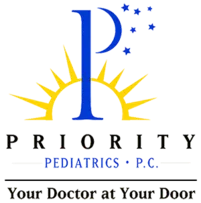This information on Coping with Engorgement comes from Breastfeeding Medicine of Northeast Ohio.
After birth, your baby receives colostrum when breastfeeding. Colostrum is a early breast milk concentrate which is packed with antibodies to boost your baby's normal immature immune system and is often called nature's first immunization. Colostrum is high in protein and low in volume. This normal small volume allows your baby to practice early feeding on a soft breast. These tiny amounts are easy for your baby's 1-2 tsp size stomach to handle.
Breast fullness occurs when the milk comes in. It is a normal part of lactation that usually happens 3 to 5 days after birth. You might experience fullness, warmth, and tenderness as the blood supply to your breasts increases along with your milk supply. Usually this normal fullness is not a big problem. The worst of the discomfort and heaviness is usually gone in 24-48 hours. To help, it's important to feed your baby frequently during the period. Be sure to take advantage of normal cluster feeding to keep your breasts comfortable and your nipples soft and graspable.
When does engorgement occur? Engorgement typically peaks at postpartum day 5. On average it lasts about 4 days. It can be more severe if your baby does not nurse very frequently or is having trouble removing milk. Engorged breasts may be very firm, hard, hot and painful. The swelling may extend into your underarm area. Engorgement is caused by milk and fluid build-up. The breast skin can become taut and shiny, and the breast swelling can flatten the nipple making it difficult for the baby to latch on.
How can I lessen engorgement? You can avoid severe engorgement with some of these simple steps:
- The best way to prevent engorgement is to nurse frequently.
- If latching difficulty occurs, soften the areola with hand expression and massage before the baby latches.
- Prior to latching, massage the breast toward the arm pit (this decreases swelling) and sofen the areola with reverse pressure softening and/or hand expression.
- Check out the video link below for a hand expression and massage demonstration.
- Express milk only for comfort (not to drain the breasts, but only for a few minutes to relieve pain or pressure).
- Apply cold compresses to your breasts between feedings (ice packs, bags of frozen vegetables, etc) for no longer than minutes at a time to prevent frost-bite.
- Apply moist heat before feedings (warm shower, warm wet wash cloth, diaper with warm water in it) to help blood flow and milk let down.
- Ask your OB or Pediatrician about using an anti-inflammatory medication such as Ibuprofen for pain relief.
- Call your OB immediately if you develop a fever over 101, flu-like symptoms (muscle aches, weakness, congestion) or redness and pain in the breast.
- If your symptoms are not improving within 2 days, consider seeing a lactation consultant.
This video demonstrates hand expression as well as basic massage techniques for breast engorgement:
There is a variety videos on this website by Canadian pediatrician and lactation consultant Jack Newmann, MD, including latching, milk transfer, supplementing at the breast and cup feeding.
http://www.breastfeedinginc.ca/content.php?pagename=videos
This collection of videos primarily includes positioning and frequently asked questions.
https://www.youtube.com/channel/UC9gWohP43VRtTfDzjv50Oyw
These Standford University resources offer useful informatin on Early Initiation of Breastfeeding, Maximizing Milk Production, Breastmilk Storage and Shipping, ABC's of Breastfeeding, The Well Fed Baby Checklist, A Perfect Latch, Hand Expressing Milk, etc.
